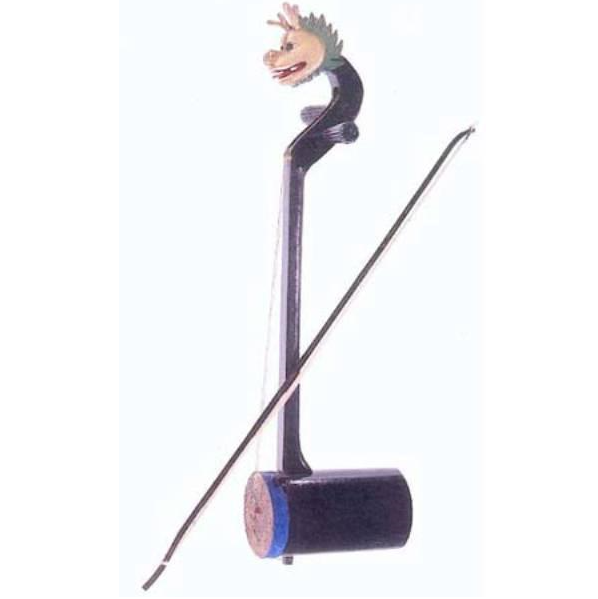nasi huqin overview
 Naxi huqin (pinyin: nà xī hú qin) is a bow and stringed musical instrument of the Naxi people. The Naxi people also call it the Dragon Head Huqin and Dahu because of the large size of the dragon head and the qin barrel. The shape is relatively simple, the tone is soft and rich, and it is used in "Baisha fine music" and "Naxi ancient music". Popular in Lijiang Naxi Autonomous County, Yunnan Province.
Naxi huqin (pinyin: nà xī hú qin) is a bow and stringed musical instrument of the Naxi people. The Naxi people also call it the Dragon Head Huqin and Dahu because of the large size of the dragon head and the qin barrel. The shape is relatively simple, the tone is soft and rich, and it is used in "Baisha fine music" and "Naxi ancient music". Popular in Lijiang Naxi Autonomous County, Yunnan Province.The appearance is similar to the long-tube large tube of Hunan Huagu Opera, and the shape is relatively simple. The appearance is similar to the long-tube large tube of Hunan Huagu Opera, and the shape is relatively simple. The qin tube is made of wood or bamboo, and it is cylindrical. The wooden ones usually use a circular section of catalpa to hollow out the inner core; the bamboo ones usually use a bamboo tube with transparent ends.
A Naxi Huqin is displayed in the Chinese Musical Instrument Museum of the Music Research Institute of the China Academy of Arts in Beijing. . This qin was made in 1984, and the craftsmanship is relatively fine. Except for the headstock, which is painted with gold lacquer, the barrel, stem, pegs and bows are all painted with black paint. The appearance is calm and solemn. It has been included in the large-scale picture book of "Chinese Musical Instruments Illustrated Guide".
Famous pieces include "Bu Bu Jiao", "Ten Offerings", "Shuilong Song", "When Spring Comes", "A River Wind" and "Hillside Sheep".
- Chinese name:nasi huqin
- pinyin:nà xī hú qin
- popular area:Lijiang Naxi Autonomous County, Yunnan Province
- alias:Dragon head huqin, Dahu
overview of other similar instruments
- sanyanxiao overview
- Daguangxian overview
- Leiqin overview
- hahao overview
- yandundagu overview
- Han Xiaozheng overview
- Fang Xiang overview
- guanzi overview
- zhuqin (Dao Qin) overview
- zhuiqin overview
- bangzi overview
- three-stringed piano overview
- Gehu overview
- xiao overview
- xiaokonghou overview
- Konghou overview
- Sheng overview
- suona overview
- hulusi overview
- gushao overview
 渝公网安备 50010702504639号
渝公网安备 50010702504639号